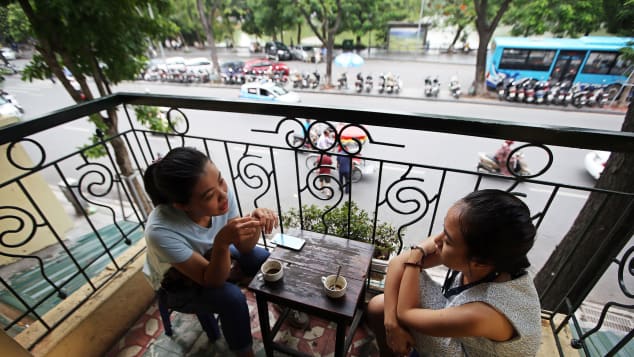By Nigel Richardson
Here’s the scene. The Hai Van Pass, which crosses coastal mountains between Hue and Danang, forms a natural barrier across Vietnam’s tiny waist. Its strategic importance through centuries of conflict is signified by the various fortifications that mark the summit – including a concrete pillbox from the Vietnam War.
On my last visit to Vietnam, we stopped on the top of the pass to enjoy the stupendous views of jungle-clad mountains sloping to the misty ocean. I was taking pictures when I noticed a couple preparing to assault the pillbox. They weren’t in combat fatigues, however. They were bride and groom, she in a pink chiffon dress and high heels.
Using a ladder, they clambered on to the circular roof of the pillbox and posed for a photographer standing below. It was a lovely vignette that said much about modern Vietnam: how far it has come in the 40 years since the end of a conflict that claimed millions of Vietnamese lives and obliterated infrastructure and landscape alike; how dynamic and optimistic its people have become.
When organised tourism from the West started in the Nineties the war was a focal point – the Cu Chi tunnels, in which the Viet Cong hid out, near Saigon (now Ho Chi Minh City) were a major draw. But the war is now a distant event for the Vietnamese, the majority of whom were born after hostilities ended.
When you arrive in the capital Hanoi, for example, I’m suggesting you head straight out of the city and into tranquil countryside to recover from the flight. Two days later, back in Hanoi, take a city tour with an experienced local guide who will show you the traditional sights, including the Temple of Literature.
From Hanoi the fantastical natural beauty of Halong Bay – karst limestone peaks rising from a shimmering sea – is a compulsory part of any trip.
For linking your stops and for day tours, hiring a car and driver (speaking some English) is not prohibitively expensive. Expect to pay around £50 a day, bookable through hotels.
A revelatory tour of the former no-man’s-land of the Vietnam War, the De-Militarised Zone (DMZ) includes my alternative to the Cu Chi tunnels, the more accessible underground village of Vinh Moc. On my visit the man who showed me around (by hand gestures as he was mute) had been born in one of the tunnels during the war – an unforgettable meeting.
So far, so busy but the beauty of this itinerary is that it allows for three nights in one of the world’s most highly evolved tourist towns, Hoi An, with its delightful waterside setting and beautiful old merchants’ houses converted into sophisticated restaurants, bars and tailor shops (they hand-make clothes to order but caveat emptor – do your homework and shop around).
The trip finishes in Ho Chi Minh City. Like all world-class cities, the former Saigon is a glorious paradox, both futuristic and traditional. I recommend visiting the War Remnants Museum, with its emphasis on the horrors of defoliants, and exploring its street life – the markets, food, and bars – like a local: on a scooter. Whichever way you go you will find a nation as colourful, enterprising and well-balanced as those newly-weds on the pillbox.
Subscribe to:
Post Comments (Atom)
Waking up to Vietnamese coffee
Why the world is waking up to Vietnamese coffee Sarah Lazarus and Mike Pham, CNN • Updated 16th March 2020 (CNN) — Rob Atthill says he wa...

-
Reasons to Visit Indochina A destination that evokes images of famed historical sites, beautiful beaches and stunning landscapes, Indoch...
-
The first double-decker bus was put into service on May 30 with hop-on and hop-off at 13 stops, running through 25 streets and taking touris...
-
Vietnam has one of the most varied and tasty cuisines that you can’t miss the chance to try when visiting Hanoi. Many ingredients used in...
-
INSIGHT ASIA TRAVEL LAUNCH FREE CHOICE OFFERS For the Summer 2017, Insight Asia Travel Vietnam introduces the “ Free Choice Offers includ...
-
(Insight Asia Travel) Finding an empty beach in Asia was a breeze a few decades ago, but it's not quite so easy anymore. As zealous souv...





No comments:
Post a Comment